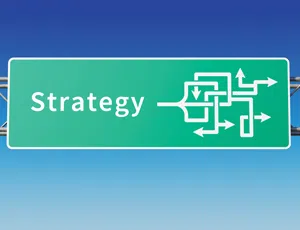Whether in business or life in general, successfully implementing any major change requires a plan.
When planning for business independence, it’s vital to make a plan that ensures financial security and personal fulfillment.
To build a strategy that will lead a company owner to business independence, there are four important Cornerstones to consider in the business exit plan and throughout the process: Business Independence Planning, Key Employee Plan, Business Contingency Plan and Owner’s Life Plan.
Business Independence Planning
This emphasizes the necessary steps for you, the owner, to part ways with your business and cut ties so the business isn’t still relying on you as the owner going forward. It’s important for the business to be able to function successfully without needing your insight and expert management skills.
If a business continues to be dependent on the owner once a plan is in place for the owner to leave, its chances of succeeding decline, its worth diminishes, and it becomes less desirable to Investment Bankers, Private Equity Investors and Business Brokers. It’s wise to create a business bucket list that includes carefully defined steps and actions that will preserve, protect and promote the business’ value before the owner departs.
When a business can operate successfully without its owner’s daily involvement, the business becomes more valuable to the current owner by providing you freedom, and to potential buyers since the business’ success is not reliant upon your input and direction. Buyers will see a stronger, more stable, higher functioning business.
Be in control of your selling power. Be comfortable with the person to whom you are selling, ensuring that you stay true to the integrity of your business. Following a strong exit plan will help you prove to any buyer that your company has a successful business model, sustainable cash flow, growth potential and minimal risk.
Key Employee Plan
As you, the business owner devises an exit strategy, you must implement a Key Employee Plan that demonstrates how employees who are vital to the company’s day-to-day operation will share in the financial growth under the new proprietor.
The current owner’s ability to recruit and retain a dedicated, knowledgeable team of business managers/owners for the next generation of the company will have a significant impact on the long-term success of the business after your departure.
One challenge business owners may face is a smaller pool of talent to choose from. The majority of closely held business owners are Baby Boomers between the ages of 55 and 75. The total baby-boom generation represents approximately 79 million people. The next generation (Gen X) are those currently in the age group from 35 to 55 years old. That generation is only 58 million people. This significant difference in population between the Boomers and Gen X will have a major impact on future ownership and management of closely held businesses.
Having a Key Employee Plan will better prepare business owners for the competition among businesses of hiring experienced, reliable management staff in a smaller pool of eligible applicants.
Business Contingency Plan
This defines how and if a business will operate successfully in the event you are unable to return to work the next day.What will your family, employees and customers encounter?
Important issues that should be considered in the Contingency Plan include:
Loss of financial resources — Either by guarantees or loans made by the owner to the business.
Loss of Key Talent — Is there someone ready to fill the role of the owner? What tasks/jobs were you, the owner, responsible for?
Relationships with customers and vendors — Is there someone ready to step in and maintain the relationships you previously established with customers and vendors?
Impact on key employees — How much does the business owner affect the staying power of key employees? Will those employees be loyal to you and your company as you prepare to exit, or might they jump ship for the competition? It’s advisable for the Contingency Plan to include a living will for the business that documents any knowledge only the owner possesses of the operations so the experience and insight can be passed on.
Life Plan
The final Cornerstone, but not the least important, takes into consideration the future emotional and mental wellbeing of the business owner as you face a major change in your everyday life. Figuring out who you are and who you want to be in the wake of your years as a business owner will help you create your future plan.
Chances are you have to consider not only what’s best for yourself and your business, but for your family as well.
Leaving your business is not the end of the plan. Living the life you have envisioned for yourself and your family will be the completion of a successful plan. In your Life Plan, you must confront the reality of “what’s next.”
Prepare yourself well to understand and be able to grasp the three components of well being — prosperity, health and happiness, and include in your plan what leads to this. For so many years you’ve likely been wrapped up in your business. Before you leave the business is the time to look outside your business to realize what creates happiness and which relationships provide experiences, engagement and meaning.
As you prepare to exit your business, look into an imaginary crystal ball to see your life without your business. Allow yourself time to plan, prepare and execute your plan, and most importantly, get to know yourself, both as a business owner and as a former business owner, free from the restrictions put upon you by the business.
The journey begins when you take on the challenge of owning a business — chart a plan today to secure your future tomorrow.



